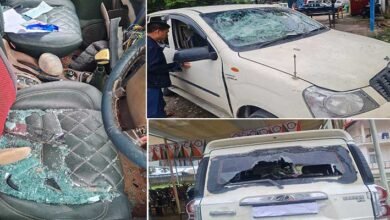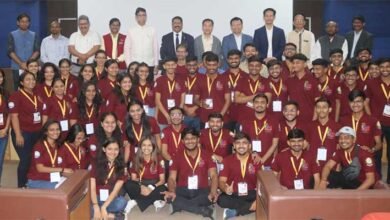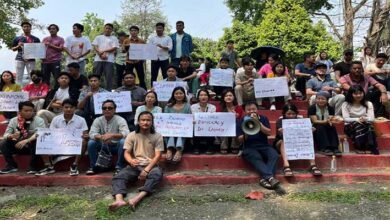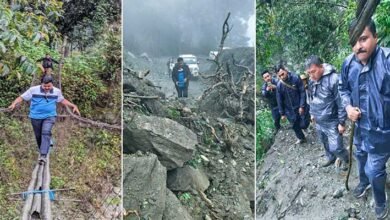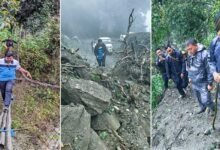Arunachal: Cattle fencing system by Adis in Bolung village of Lower Dibang Valley
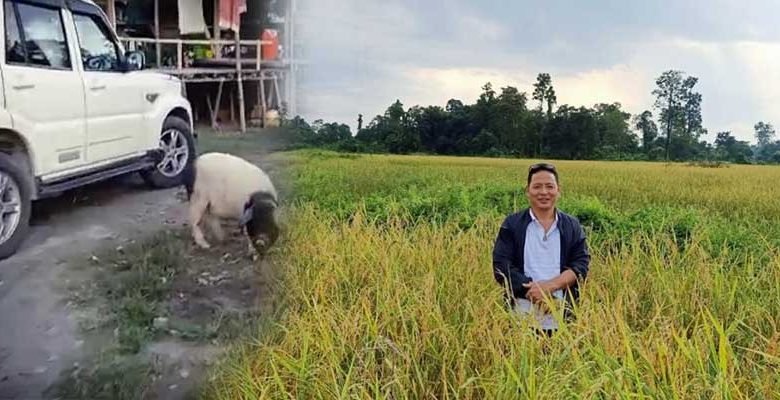
PASIGHAT- ( By- Maksam Tayeng ) Adis follows two opposite methods of fencing in village life. First, fence the farm and allow cattle to roam free. It is followed in places other than Lower Dibang Valley where the system directly restricts expansion of farm land and also makes farming very costly and laborious. Almost 50% to 80% of the working capacity of village male members is used up for fencing. In such a system only the working capacity of women is used in productive farming activities which are unproductive in a larger sense.
While the second system is to fence the cattle and freely cultivate. About 10 to 15 years ago, this was first adopted in Bolung village of lower Dibang Valley. Seeing its benefits, villages like Parbuk, Jia and Kangkong too adopted it.
Now Bomjir village under the same Lower Dibang Valley and few villages in East Siang District too adopted it, said Gonong Pertin, Executive Engineer WRD Pasighat Division who encourages villagers to follow the second system of fencing which benefits the farmers.
Best example to this effect is Siluk village under Mebo Sub-Division which has earned the kudos of District Administration and became the cleanest village of East Siang. 6 month back Siluk village carried the tag of dirtiest village. Now after adopting fences the cattle and freely cultivate, it is now the cleanest village in East Siang district.
“One of my village elder who was a part of development of this system, Mibom Pertin of Bolung village say that it’s benefit is immense as the second practice of cattle fencing saves time and energy which were unproductively used up for fencing, saves the cost of fencing material like bamboo, fence wire, wall etc, it creates hygienic condition of villages, kitchen garden possible without any Etor/fencing, no more vehicles accidents due to stray animals, domestic animals not lost due to constant care, foot & mouth disease of cows and oxen are almost eradicated because of constant care, villagers earn money by selling their bamboos which were earlier wasted in fencing and cultivation area can be extended up to full limit of village area”, said Pertin.
Since the establishment of villages in pre-independence time, villages were fencing the farm areas and cattle were allowed to roam freely for grazing. Initially the villagers were collectively practicing Jum cultivation and they used to clear jungle in a particular place and fenced that small area. It was easy. Fencing materials like bamboo and woods were also available in abundance then.
But as the population grew and villagers started cultivating cash crops, the farm areas expanded. As the farm area swelled, the length of fencing increased and so availability of bamboo for fencing dwindled out. It was impossible to fence everywhere. So the village council of Bolung village adopted a decision to fence the cattle instead. First they declared a grazing area at a place called Kenkut area but they failed.
So at last villagers adopted a resolution to keep the cattle confined by owners and adopted a fine system. It necessitated frequent village council meetings for deciding the fine and compensation amount for crops damaged by cattle. Finally the village adopted the latest prevailing rule with resolutions like, any stray animal can be killed by anybody and the meat shall be taken by the killer. The meat is given to the killer as a reward for saving crops of villagers. But the owner of the stray cattle/animal has to pay a fine for every bit of crop damaged by his/her stray/loosed cattle and he/she shall not claim compensation and animal meat if already killed by anybody.
However, the village council never bans cattle rearing. The rearers have the freedom to rear any number but the rearer has to keep his cattle confined and if let loose he has to follow and accept the rules. With such latest resolutions the problem of stray animals was completely solved and now crop damage problems have come down to almost nil as the village council could now concentrate their mind in other fields, informed Er. Pertin.
Can’t this same latest system of cattle regulations be adopted in the entire Arunachal?, questions Er. Pertin. In Arunachal Pradesh, the main problem shall be Mithun rearing. Mithun is semi-wild domestic cattle for which a large area is needed for rearing. So to control Mithun, Government initiative shall be required for fencing a selected area for Mithun rearing for villages or groups of villages.
However, Mithun, being an animal customarily knitted into almost all tribal society of Arunachal Pradesh where almost in all festivals and rituals Mithun plays an immense and inseparable role and hence many may not compromise with any control and regulation Mithun rearing.
But this Mithun is the main retardant of development of agriculture in Arunachal Pradesh. It had necessitated fencing for every plant that is grown. So it directly limited the size of farm areas thereby every poor Arunachalees are affected by it. Only rich people can afford permanent fencing. In all Mithun is a bane for poor Arunachalees.
So for development of Agriculture in Arunachal Pradesh, we have to emulate “fence the cattle and cultivate freely in farm” of Bolung village system or Government have to step in to fence a grazing area for Mithun for every villages for healthy agricultural growth in the state as major bulk of the state’s tribal population are dependent on agriculture than any other government or private jobs.





